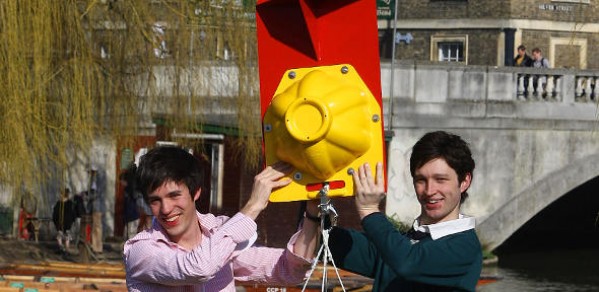
Project Pebble aims to design and build a small, deep-sea photographic vessel. "Pebble" will be deployed onto the ocean floor, to document some of the exotic, undiscovered species that live more than a kilometre underwater.
Whilst deep-sea photography has been done before, Pebble differs in one key respect. Cost. Pebble is being built for under £1000, making her tens of times less expensive than comparable deep-sea craft. This is achieved by using off-the-shelf components, almost no moving parts, and a pressure-balanced design.
The Pebble Team comprises four members from the Engineering Department. Ben Sheppard, who founded the project in April 2008, is concentrating on Pebble's structure and mechanics. Robbie Howshall, a fourth year signals processing student, is focussing on Pebble's electronics and information systems. They are being supervised by Dr. Digby Symons, a lecturer from the Engineering Design Centre, and Dr. Joan Lasenby, a lecturer from the Signals Processing Group.
Pebble has progressed quickly since the design was finalised in November 2008. The build is nearing completion and the testing phase is about to begin. If Pebble successfully passes testing, then she will be deployed on her first deep dive in May 2009.
The Joint Nature Conservation Committee and Scottish National Heritage have agreed to let Pebble be deployed onto the Darwin Mounds; a set of ancient deep-coral reefs situated halfway between Scotland and the Faroe Islands. The site was only discovered in 1998, and in 2004 the EU declared it a protected area from deep water trawling. This is an excellent time to photograph a still largely untouched and unexplored habitat.
Project Pebble would like to express its gratitude to its many contributors, without whose time and effort the project would not be possible. Project Pebble are sponsored by BAE Systems Submarine Solutions, which is currently building the planned seven-strong class of Astute submarines at its base in Barrow-in-Furness, Cumbria. Project Pebble is supported by Tritech International, EADS, and Pentax.

